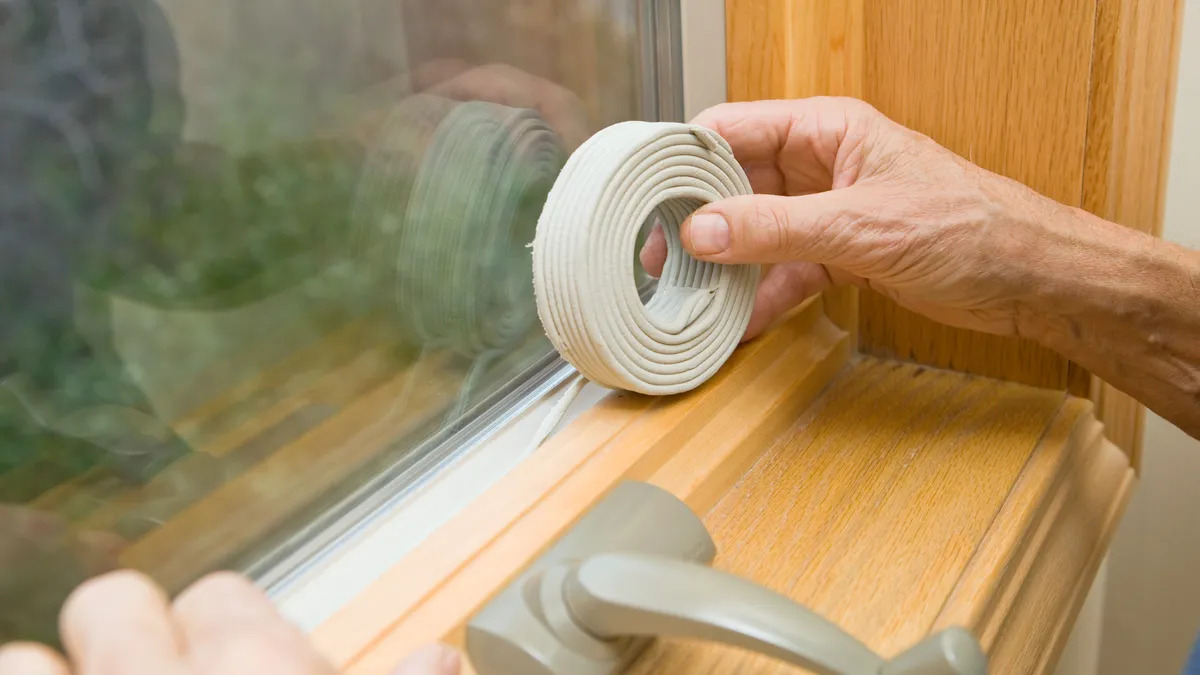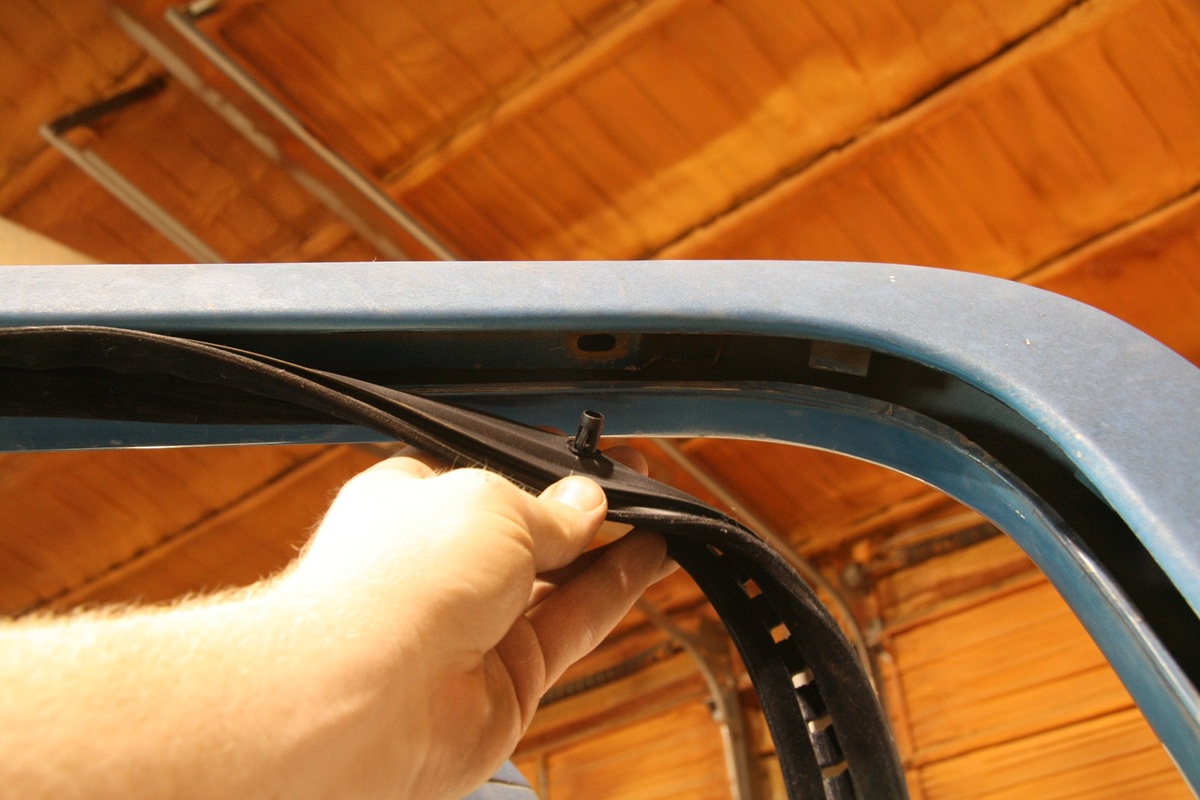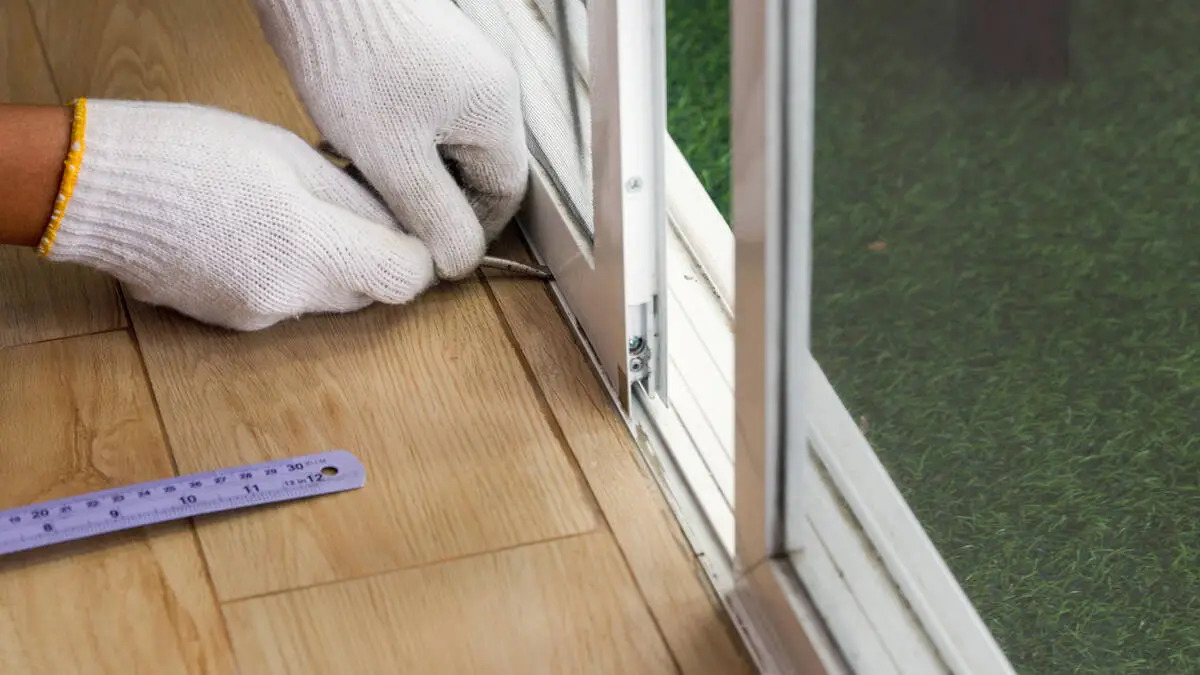Home>Energy>Home Insulation & Ventilation>What Is Weather Stripping


Home Insulation & Ventilation
What Is Weather Stripping
Modified: February 25, 2024
Learn how weather stripping can improve home insulation and ventilation. Find out what weather stripping is and how it can benefit your home. Discover the importance of weather stripping for energy efficiency.
(Many of the links in this article redirect to a specific reviewed product. Your purchase of these products through affiliate links helps to generate commission for Storables.com, at no extra cost. Learn more)
Introduction
Welcome to the world of weather stripping! If you've ever marveled at how snugly your doors and windows seal out the elements, you have weather stripping to thank. In this article, we'll delve into the ins and outs of weather stripping, exploring its definition, purpose, types, benefits, installation, and maintenance. By the end, you'll be equipped with the knowledge to make informed decisions about weather stripping for your home.
Weather stripping plays a crucial role in maintaining a comfortable and energy-efficient indoor environment. It serves as a barrier against drafts, moisture, dust, and noise, helping to keep your home cozy and secure. Whether it's the sweltering heat of summer or the icy chill of winter, weather stripping acts as a shield, preventing outdoor conditions from infiltrating your living spaces.
So, join us on this journey through the world of weather stripping, and let's uncover the secrets to a well-insulated and protected home!
Key Takeaways:
- Weather stripping seals gaps around doors and windows to keep your home cozy and save energy. It also blocks out noise and moisture, enhancing comfort and protecting your home from the elements.
- Different types of weather stripping cater to specific needs, offering flexibility and effectiveness in sealing requirements. Proper installation and maintenance ensure airtight, comfortable, and sustainable living spaces.
Read more: What Is The Best Weather Stripping For Doors
Definition of Weather Stripping
Weather stripping refers to the material or device used to seal the edges of doors, windows, and other openings to prevent the infiltration of air, water, dust, and noise. It acts as a barrier, creating a tight seal between the movable and fixed components of a structure, such as doors and windows, effectively blocking out external elements.
This sealing mechanism is crucial for maintaining indoor comfort and energy efficiency. By filling the gaps and irregularities between stationary and moving parts, weather stripping helps to minimize air leakage, ensuring that conditioned air remains inside the building while preventing the intrusion of outdoor air. This not only enhances thermal comfort but also reduces the workload on heating and cooling systems, leading to energy savings.
Weather stripping comes in various forms, ranging from adhesive-backed foam tapes and rubber gaskets to metal or vinyl strips. Each type is designed to accommodate different types of openings and provide optimal sealing properties. The choice of weather stripping material and design depends on factors such as the size and shape of the gaps, the frequency of use, and the prevailing weather conditions in the region.
Overall, weather stripping is a fundamental component of building envelope systems, playing a pivotal role in enhancing indoor environmental quality, reducing energy consumption, and prolonging the lifespan of doors, windows, and other building elements.
Purpose of Weather Stripping
The primary purpose of weather stripping is to create a barrier that seals the gaps around doors, windows, and other openings, thereby preventing the infiltration of air, water, dust, and noise. By effectively sealing these entry points, weather stripping serves several essential functions:
- Energy Efficiency: Weather stripping helps to reduce energy consumption by minimizing air leakage. By sealing gaps and cracks, it prevents conditioned air from escaping and outdoor air from entering, thereby improving the overall energy efficiency of the building.
- Thermal Comfort: A well-sealed building envelope, facilitated by weather stripping, contributes to maintaining consistent indoor temperatures, enhancing occupant comfort throughout the year.
- Moisture Control: By sealing out water and moisture, weather stripping helps to protect interior spaces from water infiltration, which can lead to damage, mold growth, and degradation of building materials.
- Noise Reduction: Weather stripping acts as a sound barrier, reducing the transmission of outdoor noise into the interior of the building, creating a quieter and more peaceful indoor environment.
- Enhanced Durability: By minimizing exposure to external elements, weather stripping contributes to the longevity of doors, windows, and building components, reducing the risk of deterioration and damage.
- Environmental Sustainability: Through its role in improving energy efficiency, weather stripping supports sustainable building practices by reducing greenhouse gas emissions associated with heating and cooling.
Overall, the purpose of weather stripping extends beyond mere insulation; it encompasses the holistic enhancement of indoor environmental quality, energy conservation, and the protection of building structures from the adverse effects of weather and external elements.
Types of Weather Stripping
Weather stripping comes in a variety of materials and designs, each tailored to specific applications and requirements. Understanding the different types of weather stripping can help you choose the most suitable option for your home. Here are some common types of weather stripping:
- Adhesive-Backed Foam Tape: This type of weather stripping is made of compressible foam with an adhesive backing. It is easy to install and suitable for sealing narrow and irregular gaps around doors and windows.
- V-Shaped or Tubular Weather Stripping: Constructed from vinyl or metal, this type features a V-shaped or tubular design, providing effective sealing for the sides of doors and windows. It is durable and offers excellent resistance to moisture and temperature changes.
- Felt Weather Stripping: Comprising woven or matted fibers, felt weather stripping is an affordable option for sealing sliding windows and doors. While it may not be as durable as other materials, it can effectively reduce drafts and noise infiltration.
- Magnetic Weather Stripping: Utilizing magnets to create a secure seal, this type of weather stripping is often used for metal doors and windows. The magnetic attraction ensures a tight closure, enhancing energy efficiency and security.
- Door Sweep: Installed at the bottom of exterior doors, a door sweep consists of a strip of material, such as rubber or vinyl, attached to a metal or plastic carrier. It effectively seals the gap between the door and the threshold, preventing drafts and moisture from entering.
- Interlocking Metal Strip Weather Stripping: Designed for double-hung or sliding windows, this type features interlocking metal strips that create a secure seal when the window is closed. It offers durability and effective protection against air and water infiltration.
Each type of weather stripping has its unique characteristics, advantages, and limitations. When selecting weather stripping for your home, consider factors such as the size and location of the gaps, the frequency of use, and the prevailing weather conditions to determine the most suitable option for optimal sealing performance.
When installing weather stripping, make sure to clean the surface thoroughly before applying it. This will help ensure a tight seal and prevent any air or water leaks.
Benefits of Weather Stripping
Weather stripping offers a myriad of benefits that extend beyond mere insulation. By effectively sealing gaps and cracks around doors, windows, and other openings, it provides numerous advantages that contribute to the comfort, energy efficiency, and durability of a building. Here are the key benefits of weather stripping:
- Energy Savings: Properly installed weather stripping reduces air leakage, preventing conditioned air from escaping and outdoor air from infiltrating the building. This results in lower energy consumption and reduced heating and cooling costs.
- Enhanced Comfort: By minimizing drafts and temperature differentials, weather stripping helps maintain consistent indoor temperatures, creating a more comfortable living environment throughout the year.
- Noise Reduction: A well-sealed building envelope, facilitated by weather stripping, acts as a barrier against outdoor noise, promoting a quieter and more peaceful indoor atmosphere.
- Moisture Control: Weather stripping prevents water and moisture from seeping into the building, reducing the risk of water damage, mold growth, and deterioration of building materials.
- Improved Durability: By protecting doors, windows, and building components from the effects of weather and external elements, weather stripping contributes to the longevity and structural integrity of the building.
- Energy-Efficient Lighting: Weather stripping helps to create a more airtight environment, which can enhance the effectiveness of energy-efficient lighting systems by reducing air movement and heat loss.
- Environmental Sustainability: Through its role in conserving energy and reducing greenhouse gas emissions, weather stripping supports sustainable building practices and environmental stewardship.
Whether it’s reducing energy bills, enhancing indoor comfort, or preserving the integrity of building materials, the benefits of weather stripping make it an indispensable component of a well-maintained and energy-efficient home.
Read more: What Glue To Use For Car Weather Stripping
Installation of Weather Stripping
Proper installation of weather stripping is essential to ensure its effectiveness in sealing gaps and improving energy efficiency. Before embarking on the installation process, it’s important to select the appropriate type of weather stripping based on the specific requirements of each door or window. Here are the general steps for installing weather stripping:
- Clean and Prepare the Surface: Ensure that the surfaces around the door or window are clean and free of dust, debris, and old weather stripping. Use a suitable cleaner to remove any accumulated dirt or residue.
- Measure and Cut: Measure the dimensions of the gaps that require weather stripping and carefully cut the weather stripping material to the appropriate lengths using sharp scissors or a utility knife.
- Apply the Weather Stripping: Depending on the type of weather stripping, carefully apply it to the designated areas, ensuring a snug and secure fit. Adhesive-backed weather stripping should be firmly pressed into place to ensure proper adhesion.
- Test the Closure: After installing the weather stripping, test the door or window to ensure that it closes properly and that the weather stripping creates a tight seal without impeding the operation of the opening.
- Seal Any Gaps: In cases where gaps persist after the initial installation, additional weather stripping or sealant may be applied to ensure comprehensive coverage and effective sealing.
- Repeat for Other Openings: If weather stripping is being installed on multiple doors or windows, repeat the process for each opening, taking care to customize the installation to fit the unique characteristics of each location.
It’s important to follow the manufacturer’s instructions and recommendations for the specific type of weather stripping being installed. Additionally, periodic inspection and maintenance of weather stripping are essential to ensure its continued effectiveness in sealing gaps and preventing air and moisture infiltration.
By following these installation guidelines and paying attention to the details, you can optimize the performance of weather stripping, contributing to a more energy-efficient, comfortable, and well-protected living environment.
Maintenance of Weather Stripping
Regular maintenance of weather stripping is essential to preserve its effectiveness in sealing gaps and ensuring optimal energy efficiency. Over time, weather stripping may experience wear and tear due to exposure to weather conditions, friction, and general use. Here are some maintenance tips to prolong the lifespan and performance of weather stripping:
- Inspect for Wear and Damage: Periodically inspect the condition of weather stripping around doors and windows. Look for signs of wear, tearing, or detachment from the surfaces. Address any damaged areas promptly to prevent air and moisture infiltration.
- Clean and Lubricate: Keep the surfaces of weather stripping clean and free of dirt, debris, and grime. Use a mild detergent and water to gently clean the weather stripping, and consider applying a silicone-based lubricant to maintain flexibility and prevent drying out or cracking.
- Repair or Replace Damaged Sections: If certain sections of weather stripping show signs of significant wear or damage, consider repairing or replacing them as needed. This may involve applying patching material or installing new weather stripping to ensure effective sealing.
- Address Environmental Exposure: Take into account the impact of weather conditions on the longevity of weather stripping. In regions with extreme temperatures, UV exposure, or high humidity, consider using weather stripping materials that are specifically designed to withstand these environmental factors.
- Adjust and Realign: In cases where doors or windows become misaligned, leading to excessive wear on the weather stripping, readjust the components to restore proper alignment and reduce strain on the sealing mechanisms.
- Consider Professional Inspection: For comprehensive maintenance and assessment of weather stripping, consider engaging a professional contractor or technician to inspect and address any issues related to sealing performance and energy efficiency.
By incorporating these maintenance practices into your home care routine, you can ensure that weather stripping continues to fulfill its vital role in sealing gaps, enhancing energy efficiency, and preserving the comfort and integrity of your living spaces. Regular maintenance not only extends the lifespan of weather stripping but also contributes to overall building performance and sustainability.
Conclusion
Weather stripping is an indispensable component of a well-maintained and energy-efficient home. By creating a barrier against air, water, dust, and noise infiltration, weather stripping plays a crucial role in enhancing indoor comfort, reducing energy consumption, and preserving the integrity of building structures. Whether it’s the adhesive-backed foam tape, V-shaped or tubular weather stripping, or magnetic sealing mechanisms, the diverse types of weather stripping cater to a wide range of sealing requirements, offering flexibility and effectiveness in different applications.
Understanding the purpose and benefits of weather stripping empowers homeowners to make informed decisions when selecting and installing weather stripping for their doors, windows, and other openings. Proper installation and regular maintenance are essential to ensure the longevity and performance of weather stripping, contributing to a more airtight, comfortable, and sustainable living environment.
As we embrace the significance of weather stripping in maintaining energy efficiency, thermal comfort, and environmental sustainability, it becomes evident that this seemingly modest component plays a significant role in the overall performance and resilience of our homes. By appreciating the impact of weather stripping on our daily lives, we can take proactive steps to optimize its effectiveness and maximize the benefits it offers, creating spaces that are not only well-insulated but also conducive to our well-being and the preservation of our planet’s resources.
So, let’s embrace the power of weather stripping as we strive to create homes that are not only sheltered from the elements but also mindful of our collective responsibility to conserve energy and promote sustainable living.
Frequently Asked Questions about What Is Weather Stripping
Was this page helpful?
At Storables.com, we guarantee accurate and reliable information. Our content, validated by Expert Board Contributors, is crafted following stringent Editorial Policies. We're committed to providing you with well-researched, expert-backed insights for all your informational needs.















0 thoughts on “What Is Weather Stripping”